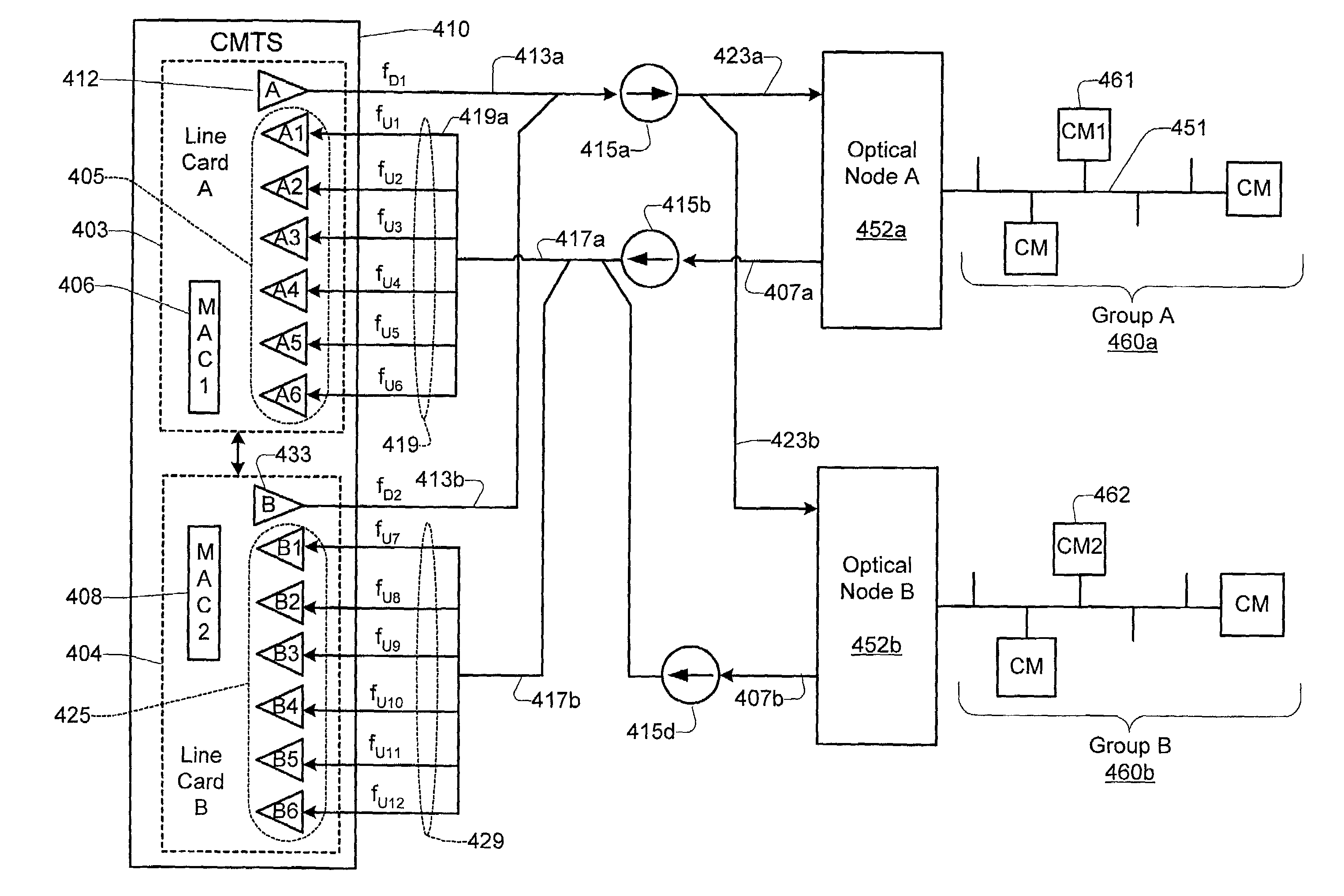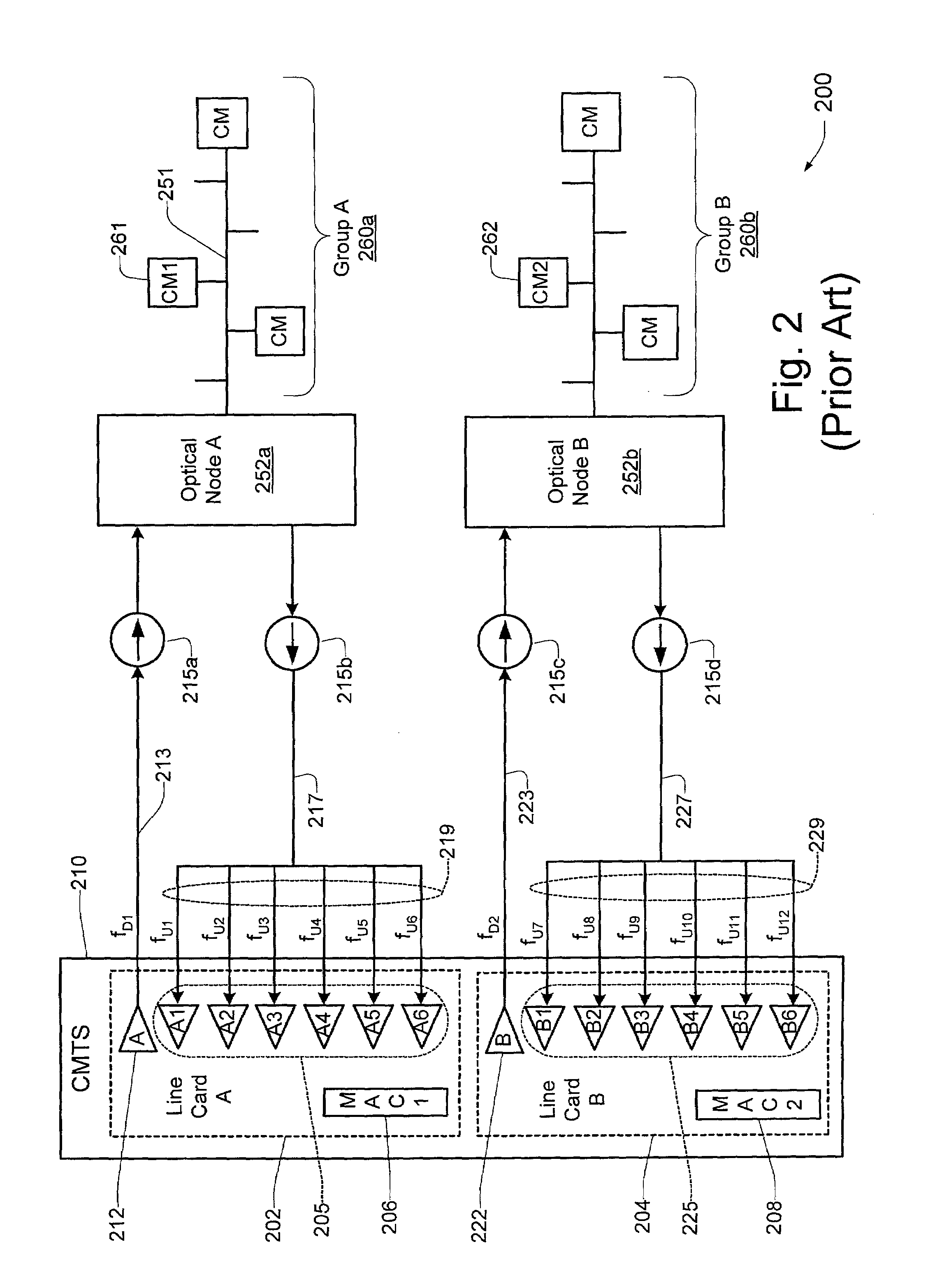Downstream channel change technique implemented in an access network
a channel change and access network technology, applied in the field of digital computer network technology, can solve the problems of not being the most advantageous configuration for handling new and emerging broadband network applications such as video-on-demand and telephony, and not being able to provide reliable high-quality voice/video communication over such networks
- Summary
- Abstract
- Description
- Claims
- Application Information
AI Technical Summary
Benefits of technology
Problems solved by technology
Method used
Image
Examples
example operation
[0131]The Dynamic Channel Change technique of the present invention will now be illustrated by way of example, with reference to FIG. 12 of the drawings and Table 1 (below). The following example describes a scenario where the CM attempts to allocate new resources by transmitting a bandwidth request to the CMTS. The CMTS temporarily rejects the request, tells the CM to change channels, and then the CM re-requests the resources. This example (not including all exception conditions) is described below, and illustrated in FIG. 12:
[0132]A) An event occurs, such as the CM issuing a bandwidth request message to the CMTS.
[0133]B) The CMTS decides that it needs to change channels in order to service this resource request. The CMTS responds with a bandwidth request response message which includes a confirmation code of “reject-temporary-DCC” in the response to indicate that the new resources are not available until a DCC is received. The CMTS now rejects any further bandwidth request message...
PUM
 Login to View More
Login to View More Abstract
Description
Claims
Application Information
 Login to View More
Login to View More - R&D
- Intellectual Property
- Life Sciences
- Materials
- Tech Scout
- Unparalleled Data Quality
- Higher Quality Content
- 60% Fewer Hallucinations
Browse by: Latest US Patents, China's latest patents, Technical Efficacy Thesaurus, Application Domain, Technology Topic, Popular Technical Reports.
© 2025 PatSnap. All rights reserved.Legal|Privacy policy|Modern Slavery Act Transparency Statement|Sitemap|About US| Contact US: help@patsnap.com



